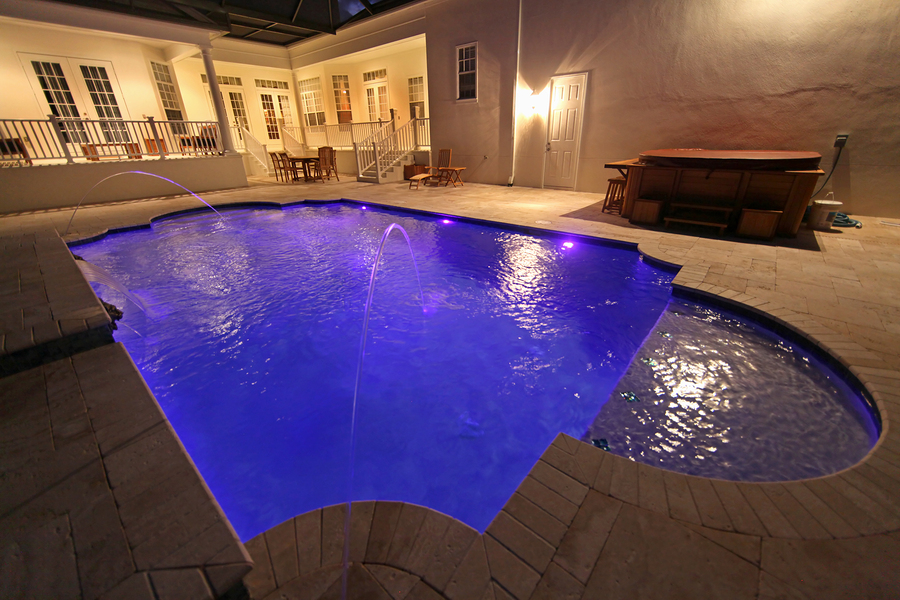interior Pool resurfacingPool resurfacing is considered once your pool plaster is peeling, cracking, flaking, discoloring, and fiberglass fibers start to wear off. However, the pool surface is expected to last for at least five years depending on the quality of the material used and the installation process. Interestingly, the new surface doesn’t go over the existing surface hence preparation needs to be done for the new coat of plaster or pebble. After the coat, you will have to decide the finish coat you prefer, either plaster, quartz, glass beads, or exposed pebbles. Interior pool resurfacing can be daunting, especially if you don’t have the know-how, at South Bend Pool Services, we specify pool surfaces to save you from hassles. You can visit us in South Bend, Indiana for some professional help. Here are some of the questions pool owners often ask.
What is the best pool resurfacing materials? There are many pool resurfacing materials in the market, however, they have different looks, durability, and cost. It can be difficult to select the type of material you will use for pool resurfacing, here are some of the best materials. |
|
Plaster; this is a common pool resurfacing material having been in use for over a decade now. Despite the surface being hard, plaster makes the water in the pool pristine, clean, and even blue.
Pebbles; this surface starts with a layer of cement. The cement has stones and pebbles that give an amazing look to the backyard.
Tile; it's common to homeowners given to its many styles and colors. Amazingly, pool tiles are different from floor tiles since they can withstand exposure to water.
Quartz; is another best material to use when resurfacing your pool.
Can I resurface my pool myself?
Depending on the type of inground pool you own, like fiberglass or concrete, resurfacing is a project you can do yourself. In case you want to consider resurfacing your swimming pool by yourself, here are some of the tips you may require for your DIY project.
Despite an inground concrete pool being durable, over a while its inner surfaces crack, fade, and chip. A residential in-ground pool of between 10,000 to 20,000 gallons will require an average of between 2,500 to 5,500 dollars to resurface by plastering. However, some factors like size, shape, and depth determine the amount to be paid. The cost also differs with the material used, like pebble costs between 5,000 to 10,000 dollars
What’s the difference between replastering and resurfacing?
Whenever you want to remodel a swimming pool, pool resurfacing and replastering is the option, because they focus on the interior surface. The difference arises in terms of the price of completing the project. However, you need to check the following when resurfacing the pool
Pebbles; this surface starts with a layer of cement. The cement has stones and pebbles that give an amazing look to the backyard.
Tile; it's common to homeowners given to its many styles and colors. Amazingly, pool tiles are different from floor tiles since they can withstand exposure to water.
Quartz; is another best material to use when resurfacing your pool.
Can I resurface my pool myself?
Depending on the type of inground pool you own, like fiberglass or concrete, resurfacing is a project you can do yourself. In case you want to consider resurfacing your swimming pool by yourself, here are some of the tips you may require for your DIY project.
- Drain the pool
- Clean the pool
- Prepare the surface
- Prime the surface
- Do finishing
Despite an inground concrete pool being durable, over a while its inner surfaces crack, fade, and chip. A residential in-ground pool of between 10,000 to 20,000 gallons will require an average of between 2,500 to 5,500 dollars to resurface by plastering. However, some factors like size, shape, and depth determine the amount to be paid. The cost also differs with the material used, like pebble costs between 5,000 to 10,000 dollars
What’s the difference between replastering and resurfacing?
Whenever you want to remodel a swimming pool, pool resurfacing and replastering is the option, because they focus on the interior surface. The difference arises in terms of the price of completing the project. However, you need to check the following when resurfacing the pool
- Type of finish
- Size of the pool


